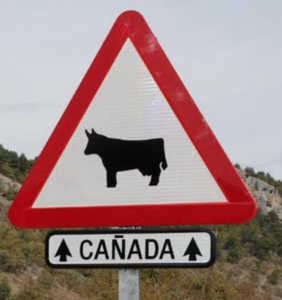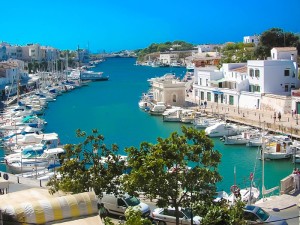The thought of driving in another country scares the crap out of many people, usually with good reason. It’s not just about driving a strange car, but also all the other complications that are thrown into the mix. Who wants to tackle roundabouts, narrow roads, weird signs, manual transmissions and, in places like Britain and Australia, suddenly being on the wrong side of the road?
Climbing behind the wheel in a foreign land does sound about as sensible as jumping out of a perfectly good airplane. That said, it’s kinda the only way to get from point A to point B in some places. So, when it comes to driving in Spain, ole!
The more I delve into the intricacies of Spanish road laws, the more I see the Spanish are awfully precise when it comes to driving, although maybe a tad obsessive on occasion. They definitely love signs. There must be a dozen covering specific times you can stop or park, including ones covering the first or second fortnight of the month. Another one has a car flipped on its side that warns of slippery conditions. And a third shows a car in flames, warning that vehicles may be carrying flammable liquids. I sense that they really like to hammer home the point.
Like most countries, they have a sign with a picture of an animal to warn that critters may cross here, but interestingly if the same sign also has the old Spanish word “Cañada” across the bottom, it means the animal actually has the rig ht of way.
ht of way.
My favorite rule with ample precision covers right turn lanes. If you are stopped at a light in a lane marked with arrows pointing straight ahead or turn right with the intention of driving straight and another driver comes up behind you indicating a right turn, you are obligated to also make a right turn, whether you want to or not.
Taking an extra right might not sound like a big thing, but I’ve quickly learned while driving in Spain that a wrong turn is no simple matter. The American concept of just going around the block never made it across the Atlantic. When you miss a turn here, it’s likely going to turn into a long exercise covering a few miles to get back to point A. This is largely due to the fact that the Spanish feel about left turns pretty much the same way that I feel about people who toot in elevators. There’s a real foul aura around them. You can drive all the way to the next town before finding a road that allows a left turn. Toss in a succession of one-way streets that prevent right turns and you get a sense about just how challenging it can be.
That said, driving in Spain really isn’t that bad. The highways are wide, modern and uncrowded. Back in the city, the traffic volume is higher, but still nowhere near the level of large American cities. I heard a city official mention that, at night, 70% of Barcelona’s cars are underground, so that helps explains the lack of apparent crowding. Of course, these cars are parked in underground spaces seemingly designed for Tonka toys. In our garage, there’s one space consisting of nothing but a curve around a post. Not only is it a space here, but it’s used by a van the size of an Econoline. My time in underground garages is regularly interrupted by me stopping and saying ‘wow” as I spot another parking miracle.
The other remarkable thing about driving here is renting a car. I’ve had people tell they found car rentals for as little as $2.50 a day. My best is $25 for six days. It is a bargain, but the number of games the low end rental car companies here play is a minefield. That rental rate is like a loss leader, followed by a bevy of smaller charges where the money is actually made.
They push a fuel service which not only has an inflated price for the gas but also extra fees for pumping it. There’s always a fee for using a credit card, which is interesting since you need one to complete the rental. They drive the hoop like Michael Jordan when it comes to pushing the extra insurance. On my last rental, the agent pretty much trotted out every horrible scenario except locusts in an effort to get me to add the insurance. And, of course, if something does actually happen to the car, then a whole new flood of fees will pop up with the repair such as transferring the vehicle to the shop, loss of use, loss of value, etc., etc.
So far I’ve been lucky and avoided most of this quagmire of fees, but it’s a pit that really easy to fall into, especially for the smiling tourist thinking about nothing but the vacation days ahead as they land in a strange place. I can only imagine how much is collected from these folks each year. Driving in Spain isn’t for everyone, but sometimes you just have to take the leap. But don’t forget to give the cow the right of way.
RANDOM THOUGHTS: The saving grace of never being able to turn left are the roundabouts. They love them here. They are not too tough to navigate at one or two lanes wide, but occasionally in the city you hit one that’s 4-5 lanes across. It’s literally a free-for-all, anything goes roller coaster ride in these. I have no idea how you escape from the lane all the way to the inside. There’s probably a Skoda down there that’s been circling since the turn of the century…

